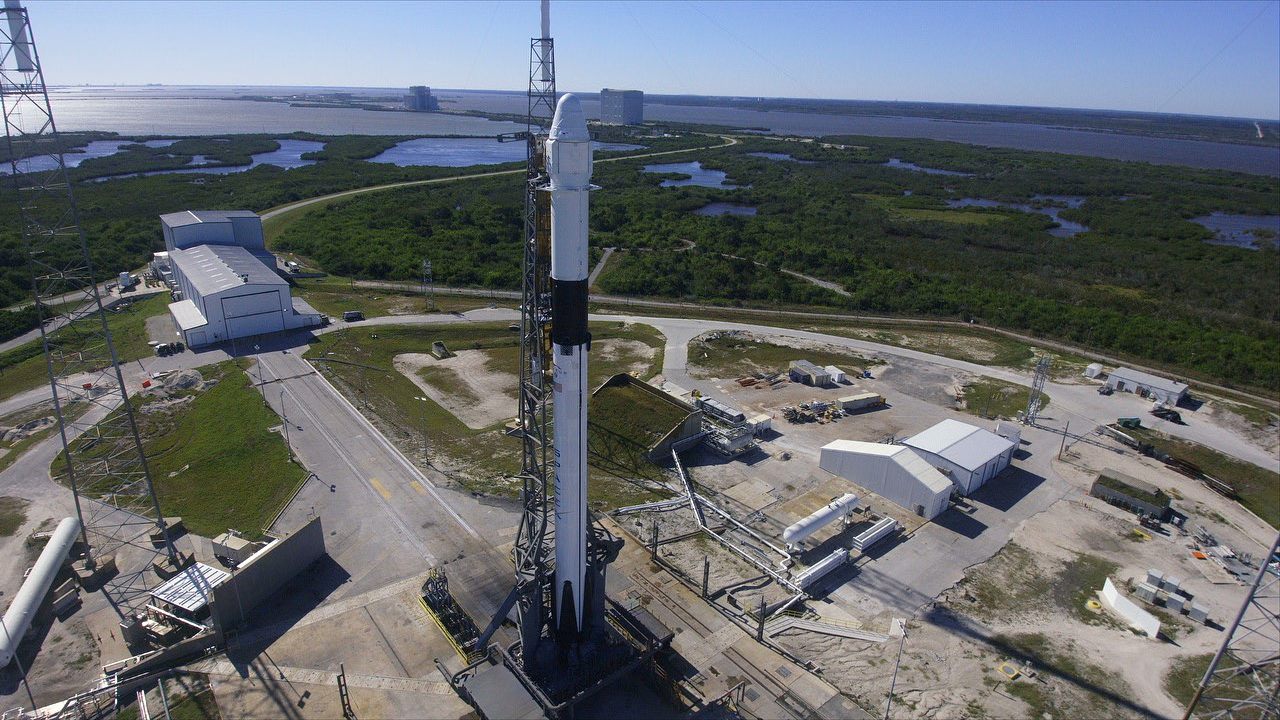NASA Delays SpaceX Dragon Cargo Launch Due to Space Station Power Glitch
Liftoff is set for no earlier than Friday, May 3.

NASA and SpaceX have postponed the planned launch of a new Dragon cargo ship this week due to a power system glitch on the International Space Station, agency officials said today (May 1).
SpaceX will now aim to launch the Dragon resupply mission atop a Falcon 9 rocket no earlier than Friday (May 3), a two-day delay, NASA officials added.
The launch delay came at NASA's request as engineers on Earth tackle a power issue on the station that began on Monday (April 29), when a problem popped up with one of the station's Main Bus Switching Units. The device distributes electricity for two of eight power channels on the station.
"There are no immediate concerns for the crew or the station," NASA officials said in the statement today (April 30). "Teams are working on a plan to robotically replace the failed unit and restore full power to the station system."
Related: How SpaceX's Dragon Space Capsule Works (Infographic)
The power issue isn't a concern for the six astronauts currently living and working on the space station, but it has affected the outpost's Canadarm2 robotic arm, NASA officials said.
NASA spokesperson Dan Huot told Space.com Monday that the power issue affected one of two power systems on the robotic arm, leaving it without a backup. The Canadarm2 robot arm is vital to SpaceX's Dragon mission, since astronauts will use the appendage to capture Dragon when it arrives at the orbiting lab. The arm is also used to attach Dragon to the station.
Get the Space.com Newsletter
Breaking space news, the latest updates on rocket launches, skywatching events and more!
.@NASA has requested @SpaceX move off from May 1 to no earlier than May 3 for the launch of its #Dragon cargo mission to the station. https://t.co/inTfUoHT30 pic.twitter.com/3m3lchffdXApril 30, 2019
A pair of astronauts worked on the robotic arm's power supply during a spacewalk conducted earlier this month, but that work focused on jumper cables along the arm's length. The current problem, instead, is with the station equivalent of a circuit-breaker.
"Flight controllers have been working to route power through the remaining six power channels," NASA officials said in a statement released yesterday.
The launch has already been hit by two delays, which pushed the launch first from April 26 to April 30 on account of "station and orbital mechanics constraints," then to May 1. The rocket will lift off from Space Launch Complex 40 at Cape Canaveral Air Force Station in Florida.
When it does launch, the capsule will set off on a leisurely three-day journey to the space station, where astronauts will unpack the more than 5,550 lbs. (2,495 kilograms) of supplies it carried. That includes fresh supplies and new science experiments.
The mission, called CRS-17, will be SpaceX's 17th cargo delivery flight for NASA under a resupply contract.
Space.com managing editor Tariq Malik contributed to this report.
- See the Evolution of SpaceX's Rockets in Pictures
- The Emergency Launch Abort Systems of SpaceX and Boeing Explained
- SpaceX Cargo Launch Still On Track Despite Crew Dragon Anomaly
Email Meghan Bartels at mbartels@space.com or follow her @meghanbartels. Follow us on Twitter @Spacedotcom and on Facebook.
Join our Space Forums to keep talking space on the latest missions, night sky and more! And if you have a news tip, correction or comment, let us know at: community@space.com.

Meghan is a senior writer at Space.com and has more than five years' experience as a science journalist based in New York City. She joined Space.com in July 2018, with previous writing published in outlets including Newsweek and Audubon. Meghan earned an MA in science journalism from New York University and a BA in classics from Georgetown University, and in her free time she enjoys reading and visiting museums. Follow her on Twitter at @meghanbartels.









